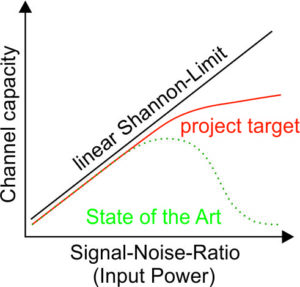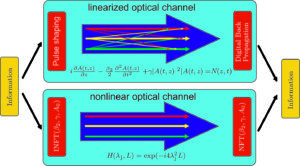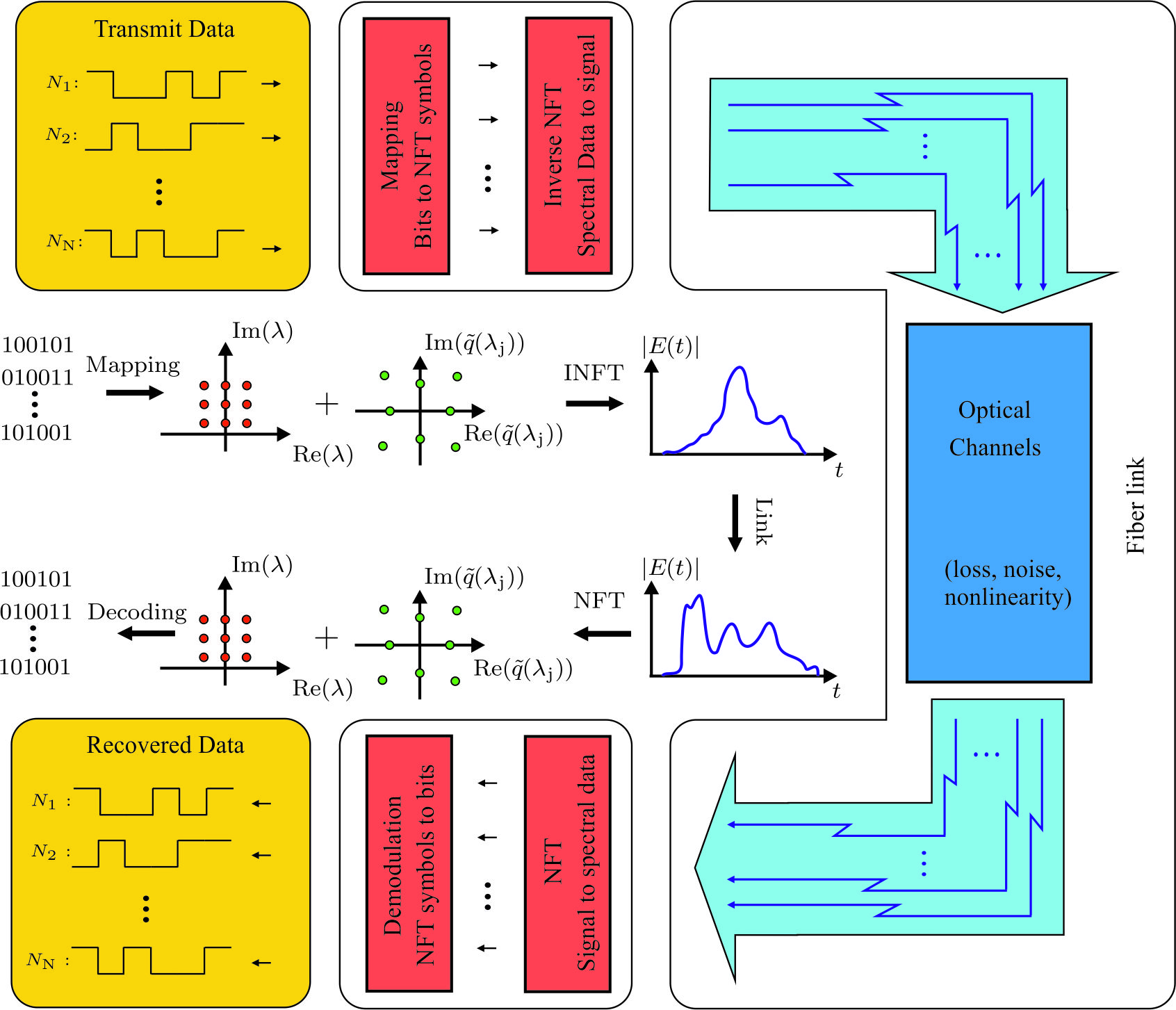Proposed optical communication system based on Nonlinear Fourier Transform


Transmission capacity depending on the Comparison of transmission in the linearized / nonlinear optical channel
signal-to-noise ratio / signal power
Introduction
The ever growing capacity demand is a major challenge for the realization of optical transmission systems. The compensation of nonlinear impairments limiting the spectral efficiency and reach of the systems is a key topic of research. The application of coherent transmission technology enables the usage of signals optimized for the nonlinear channel using a new powerful mathematical tool, the Nonlinear Fourier Transform (NFT). While the propagation in an optical fiber is described by the nonlinear Schrödinger equation (NLSE), the NFT is a method transforming dispersive and nonlinear effects into a nonlinear spectrum with a complex frequency. Thus complex eigenvalues and their spectra can carry information while the channel acts as linear phase rotation and scaling of magnitude. Since the theoretical assumption of a lossless transmission is violated the impacts of realistic conditions like limited bandwidth, loss and amplification as well as noise on the NFT solutions have to be investigated. Due to the novelty and mathematical complexity several proposals for realizations exist while a holistic, feasible approach to implement an NFT based system is still missing.
In the nonlinear frequency regime the superposition principle is no longer valid. This encourages the development of a new spatial frequency analysis method to depict the contributions of individual eigenvalues along the fiber. These insights on the propagation of such complex, nonlinear signals together with an investigation of the impact of a variation of the nonlinear phase induced by the signal on the eigenvalues shall be used to generate optimized launch signals.
The benefits of a NFT approach are obtained using a large bandwidth. Thus the impairments of the linear and nonlinear characteristics, the converter resolution and the phase noise of the optical transceivers are investigated in order to be modeled and compensated since the theoretical time functions are sensitive due to their varying bandwidth and partly high peak powers. Previous experimental implementations rely on the usage of a single laser for transmitter and receiver. Our receiver will be realized with a free running local oscillator laser for the first time. Therefore new procedures for carrier phase estimation have to be implemented and the impact of laser linewidth investigated. Usually losses are compensated in a discrete periodical manner but conventional level control might be inappropriate for using NFT transmission. A new level control approach shall be designed by extending the NLSE with respect to attenuation and enhance the perturbation analysis with an additional term and verified experimentally.
An increase of the spectral efficiency of NFT based systems can be realized by modelling the propagation in the fiber by the Manakov equations and using a polarization multiplex approach. Therefore a capacity increase by a factor 3 to 5 is expected.

Transmission of the discrete NFT spectrum via NFT / INFT
M. I. Yousefi and F. R. Kschischang,
Information Transmission using the Nonlinear Fourier Transform, Part I-III: Spectrum Modulation
IEEE Transaction of Information Theory, vol. 60, no. 7, pp. 4312-4368, 2014
Our newest achievements in the field of nonlinear communication with eigenvalues were presented on the workshop „Modelling and simulation of photonic components and systems“ in Hamburg.
The slides of the presentation can be downloaded here:

Literature on the topic:
Letzte Änderung: 26. April 2018